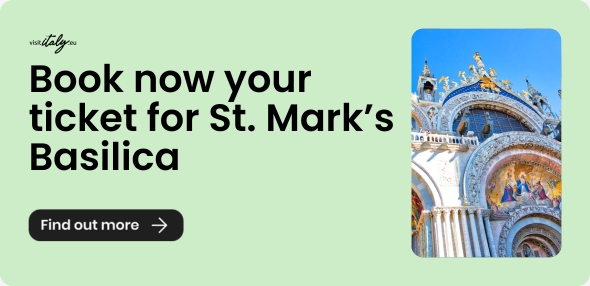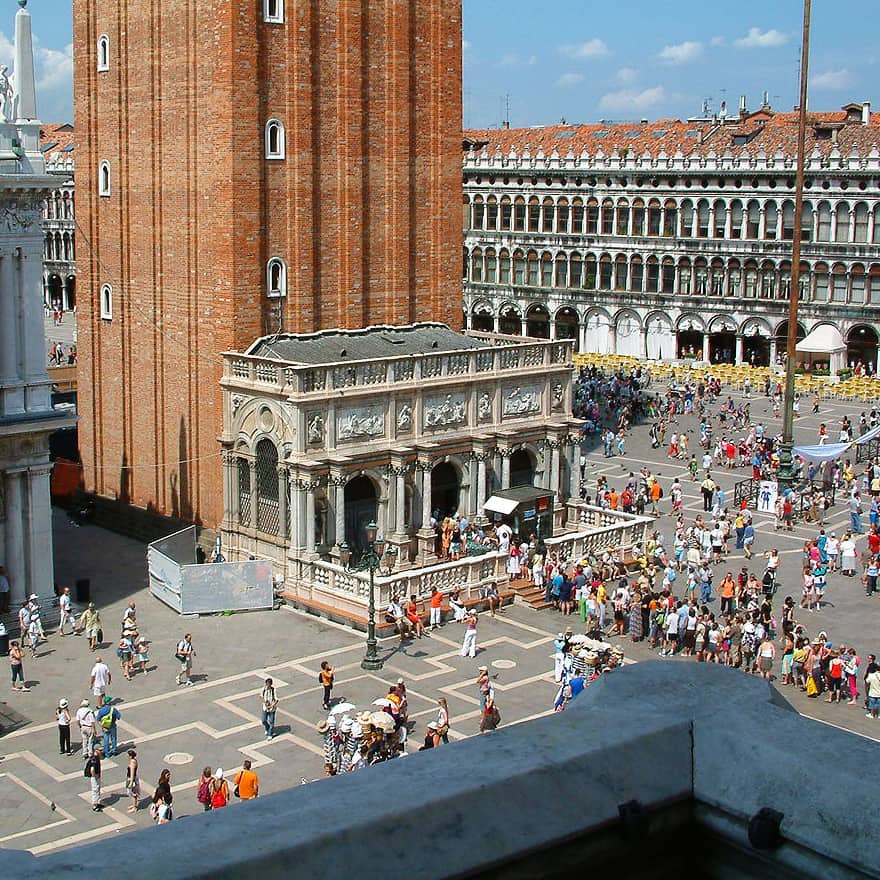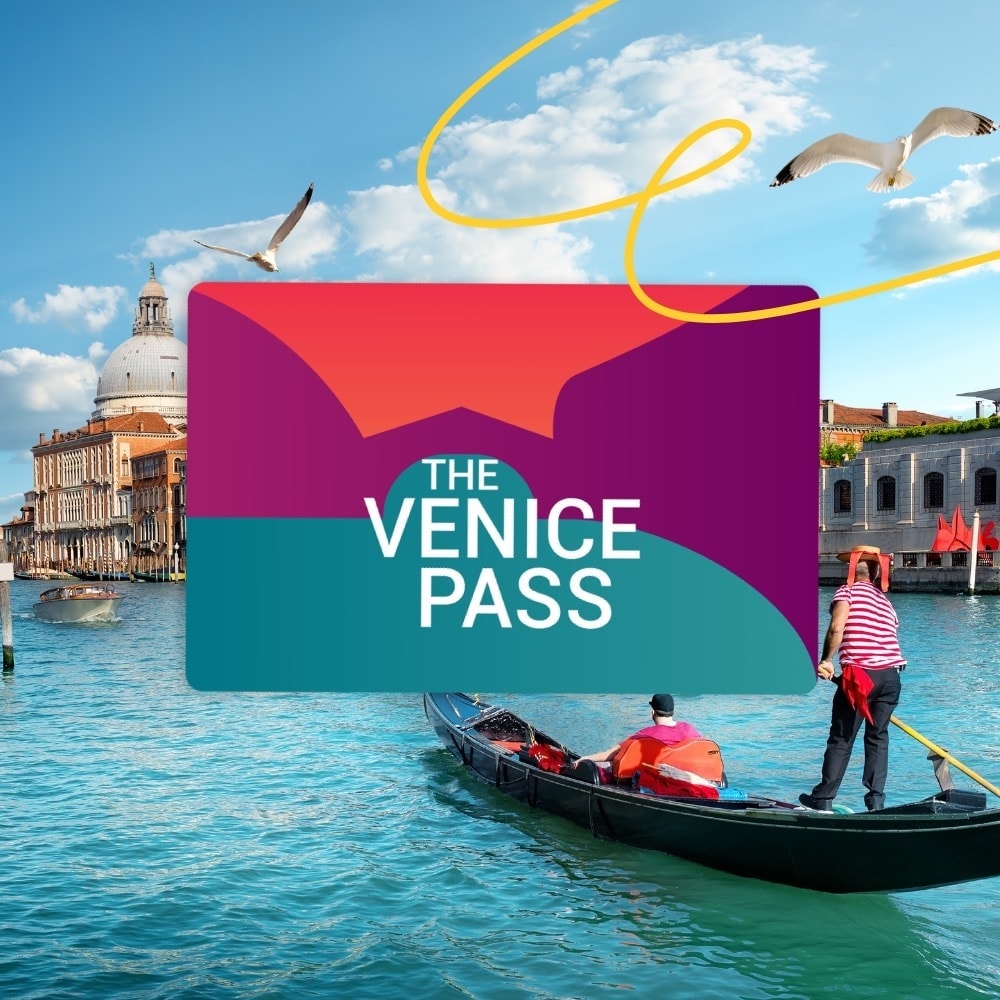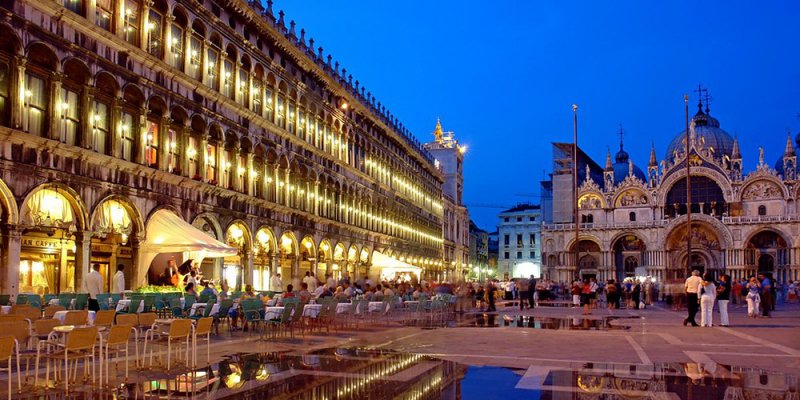Meeting with beauty. Journey in the Sestiere San Marco
Perhaps not everyone knows that Venice is not ideally divided into quarters like other cities in Italy and Europe, but it follows an urbanistic scheme that historically has distinguished the city into six pieces, the sestieri. One of the richest in art and beauty is certainly the one that hosts the homonymous square dedicated to the Patron Saint; what are we talking about? Obviously the Sestiere San Marco: the social and cultural centre of Venice, where we find the Doge's Palace, seat of Venetian political power since the 9th century, the glorious St Mark's Basilica, the historic La Fenice theatre, museums, galleries immersed by campi and campielli.
You will be able to admire all your favourite historical monuments with numerous advantages by purchasing the Venice Pass, a card that includes the main attractions and the use of public transport adapting to your needs: find out which one suits you best!
Find out more
Once in Venice: everything there is to see in San Marco

Let's suppose we start our urban exploration that will take us right to St. Mark's Square from the space in front of St. Lucia station; obviously to arrive in that sestiere we can decide to get there on foot or to take the vaporetto of line 1 from "ferrovia B" or from "Piazzale Roma F". Since we will have to walk a lot this time we will opt for this option but we appreciate the more daring Explorers who decide to venture through all the narrow streets and bridges of Venice. The vaporetto, however, will take us across part of the Grand Canal to the "Rialto" stall where we have to get off. Once we get off, take a minimum of time to admire the most iconic bridge in the city, pass in front of the town hall of Ca' Loredan, (an extraordinary Byzantine palace rich in artistic heritage between the 16th and 18th centuries) and head towards Campo Manin, where we can admire the 19th century monument to Daniele Manin by the bronze artist Luigi Borro. In a more internal area in these parts, Palazzo Contarini del Bovolo, famous for its "graceful and bizarre" staircase by the owner Pietro Contarini, a member of the powerful Contarini family of the San Paternian branch, descendant of the sixtieth doge of the Republic, Andrea Contarini.
Nearby there are two other "Fields": San'Anzolo (or Sant'Angelo) and Santo Stefano, the first is a large square with a Z-shaped plan, which is an important pedestrian junction for the city, in fact, from here branch off calli that lead to Santo Stefano where there is also the famous Accademia Bridge, and other buildings of historical and artistic importance such as Palazzo Trevisan Pisani, Palazzo Gritti Morosini, Palazzo Duodo and the complex of the monastery of Santo Stefano, an ancient place of worship dating back to the thirteenth century. The prestigious Istituto Veneto di Scienze, Letterature ed Arti (Veneto Institute of Science, Literature and Arts) is also present in the Santo Stefano area. Besides being a promoter of schools and seminars of higher education, it has a rich art collection and an important book heritage.
Before returning to campo Manin, it is worth mentioning the presence of Palazzo Fortuny, today one of the art museums of the Fondazione Musei Civici di Venezia and one of the greatest examples of Gothic architecture in the city, whose museum collection is made up of a nucleus of works centred around the figure of the Spanish artist and visual researcher Mariano Fortuny Marsal. All the arts are represented here, including painting, sculpture, lighting technology, theatre, photography, textiles and theatrical clothing. An artistic and cultural heritage that has been further implemented over the years.
Towards St. Mark's Square

After this last cultural stop we can also walk to St. Mark's Square, the only open space in Venice that bears the name of "Piazza", an extraordinary living room full of world-famous monuments.
We will go back to Campo Manin, which has now become our reference point in terms of orientation, and we will cross the small Campo San Luca, a crucial point for catering, bars and commerce of all categories; in fact, after a long walk, you will surely be hungry. Once refreshed, we can start walking again through this beautiful sestiere, we are only four minutes walk from St. Mark's Square which we can easily reach by following the signs.
The Piazza itself is the area enclosed between the old, new and very new Procuratie, a series of buildings in which the so-called procurators of the Republic of Venice lived, among the most prestigious and important offices immediately after the Doge. The square sees these very buildings articulated around its space in an architectural combination of incredible charm, which is enhanced by the monumental complex of St. Mark's Basilica and the soaring and famous bell tower, almost one hundred meters high. At its foot is the famous Loggetta del Sansovino, built to a design by architect Jacopo Sansovino, which was created as a meeting place for patricians with the government authorities who had their headquarters in San Marco. A triumph of decorative elements and allegorical scenes glorifying Venice and its victories over time. The beauty obviously does not end here, keep in mind the presence of the lagoon waters and the elevations that only this place can offer, among the arcades, the magical historic cafés such as Florian or Lavena, the columns of St. Mark and St. Todaro, the marbles, the gold, the mosaics. An infinite beauty enclosed in a unique place, able to represent one of the most evocative Italian art routes to get into, and possibly get lost.
About the author
Written on 10/11/2020




Emanuele Castellano
Perhaps not everyone knows that Venice is not divided into neighbourhoods like other cities in Italy, but it follows an urbanistic scheme that historically has distinguished the city into six pieces, the sestieri. One of the richest in art and beauty is certainly the one that hosts the homonymous square dedicated to the Patron Saint; what are we talking about? Obviously the Sestiere San Marco.